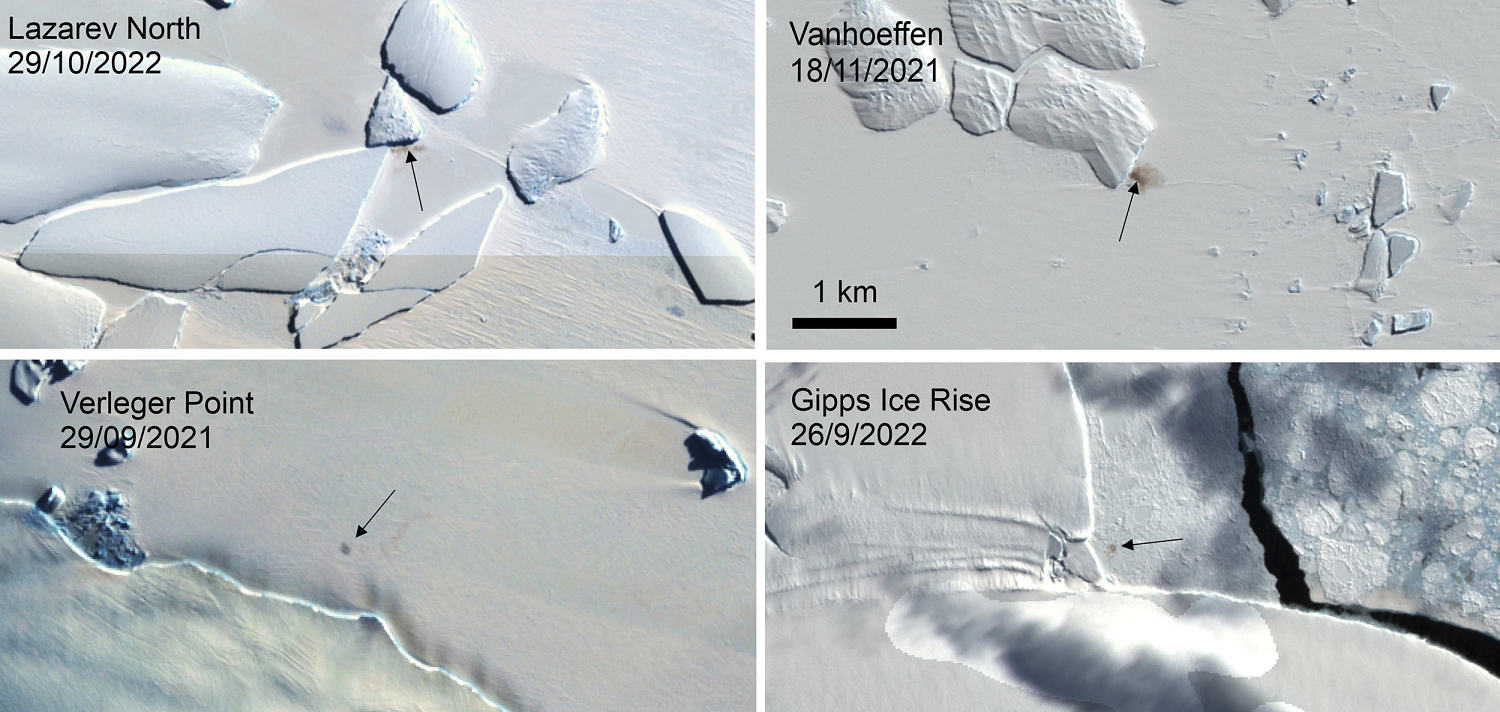Four new emperor penguin colonies spotted in Antarctica thanks to poop

Emperors are the largest species of penguin, often weighing around 90 pounds. But this giant flightless bird also has one of the most precarious breeding practices on earth.
To ensure their chicks fledge in the summer, they breed at the coldest time of year, when temperatures near -50 Fahrenheit and Antarctic winds howl at 120 mph. Male penguins keep chicks warm by balancing the eggs on their feet, and colonies of up to 5,000 huddle together to keep warm — shuffling around so each one gets a turn on the inside, according to the British Antarctic Survey.
But these animals do all of their breeding on Antarctic sea ice, which last year reached its lowest-ever maximum since scientists began measuring in 1979. Some scientists fear the decline is now so extreme that humanity has lost control of what is now an unavoidable snowball effect.
If an ice sheet breaks up before a colony of emperor penguins sees its chicks fledge, the young birds will fall into the water and die, Fretwell said. That’s what happened over the past two years, in particular 2022, which saw a “total breeding failure” in all but one of five known breeding sites, according to another study by Fretwell published last year.
The new colonies identified by Fretwell are mostly small. And at least some of the penguins appear to have moved because of unstable sea-ice conditions, he said in the article published in Antarctic Science.
“When the colonies fail, they will move to other areas,” Fretwell told NBC News.
“We spend all this time monitoring these animals and seeing if they can adapt to climate change, but really, in the end, it’s not the penguins that need to adapt, it’s us,” Fretwell added. “We need to stop our addiction to fossil fuels — not just for penguins, but for all species, even ourselves.”
Read More: Four new emperor penguin colonies spotted in Antarctica thanks to poop

